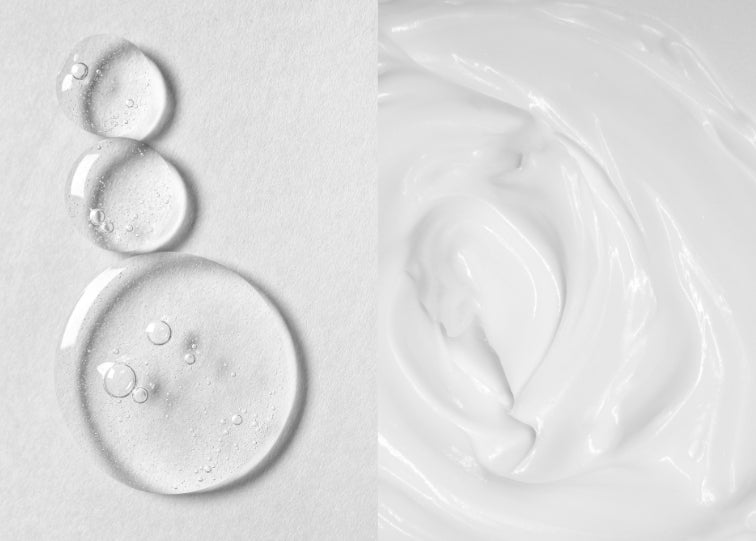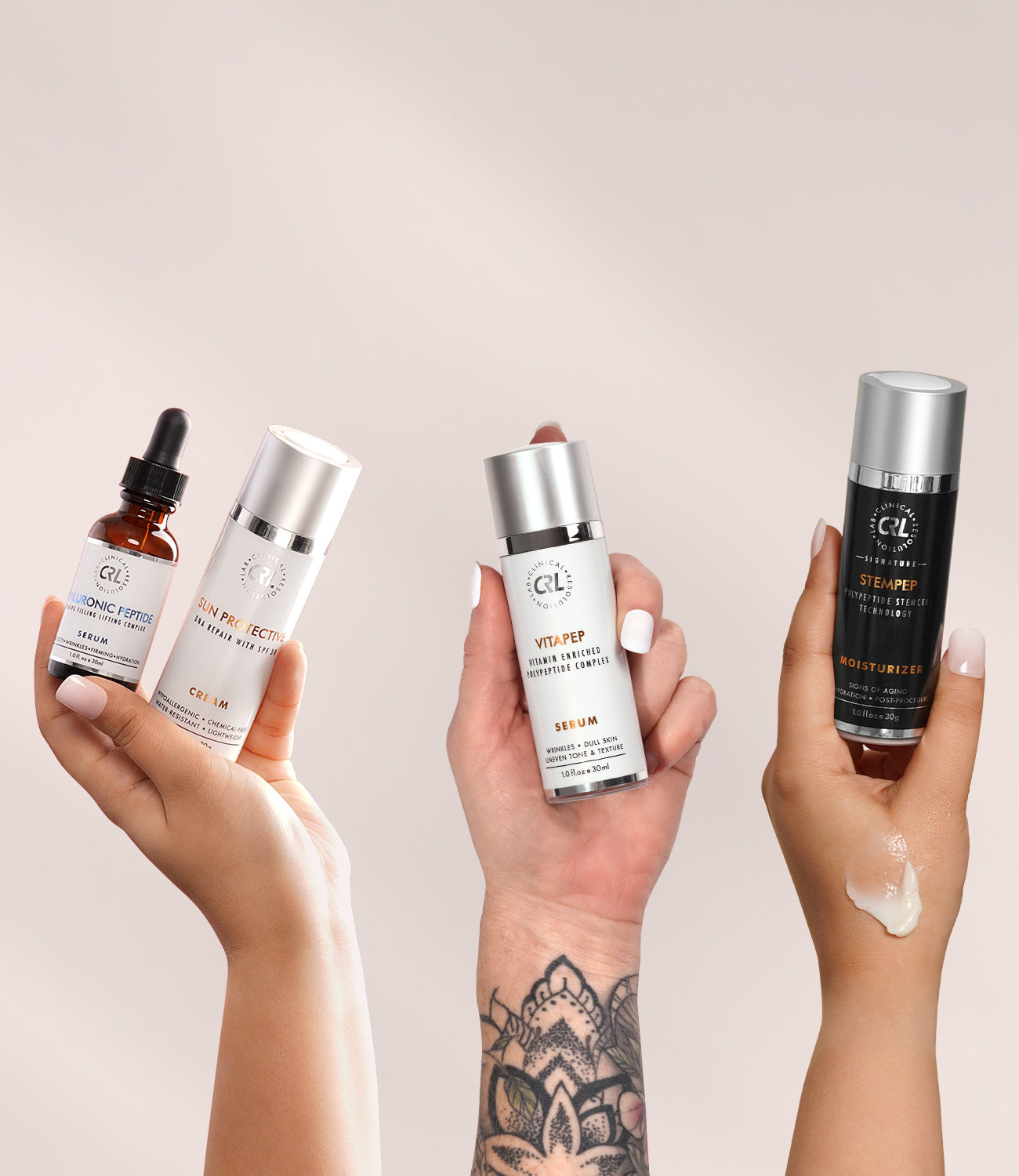
When it comes to skincare, two of the most essential products in any routine are serums and moisturizers. While both contribute to healthy, glowing skin, they serve different purposes. Understanding their differences can help you make informed decisions and get the most out of your skincare routine.
What Is a Serum?
A serum is a lightweight, fast-absorbing skincare product formulated with a high concentration of active ingredients. It is designed to target specific skin concerns, such as:
- Fine lines and wrinkles (e.g., retinol, peptides)
- Hyperpigmentation and dark spots (e.g., vitamin C, niacinamide, tranexamic acid)
- Hydration (e.g., hyaluronic acid, glycerin)
- Acne and inflammation (e.g., salicylic acid, niacinamide)
Since serums contain smaller molecules, they penetrate deeper into the skin, delivering potent ingredients directly where they’re needed most. They typically have a thin, liquid, or gel-like consistency and should be applied after cleansing and before moisturizing.
What Is a Moisturizer?
A moisturizer is a thicker skincare product designed to hydrate and protect the skin by locking in moisture. It creates a barrier on the skin’s surface, preventing water loss and shielding against environmental stressors. Moisturizers typically contain:
- Humectants (e.g., hyaluronic acid, glycerin) to attract moisture
- Emollients (e.g., ceramides, squalane) to soften and smooth the skin
- Occlusives (e.g., shea butter, petrolatum) to form a protective barrier
Moisturizers are essential for maintaining skin hydration and preventing dryness, irritation, and premature aging. They should be applied as the last step in your skincare routine (or before sunscreen during the day).
Key Differences Between Serums and Moisturizers
| Feature | Serum | Moisturizer |
|---|---|---|
| Texture | Lightweight, liquid or gel-like | Thicker, cream, or lotion |
| Function | Targets specific skin concerns | Locks in moisture and protects skin |
| Absorption | Deep penetration | Surface hydration and barrier function |
| Application | After cleansing, before moisturizer | After serum, before sunscreen |
| Active Ingredients | High concentration of actives | Blend of humectants, emollients, occlusives |
Serums vs. Moisturizers: How They Work in Clinical Resolution Lab’s Product Lines
At Clinical Resolution Lab, we offer both serums and moisturizers that complement each other in targeted skincare routines. Here’s how they work together within our product lines:
StemPep Line (Serum vs. Moisturizer)
Similarities: Both contain stem cell extracts (Alpine Rose and Apple), peptides, ceramides, panthenol, and botanical extracts that support skin repair and anti-aging.
Key Differences:
- Serum: Lightweight and fast-absorbing, focusing on delivering active ingredients deeply (e.g., peptides, ascorbic acid, arbutin).
- Moisturizer: Contains similar actives but in a thicker, more emollient formula to lock in hydration and reinforce the skin barrier.
VitaPep Line (Serum vs. Moisturizer)
Similarities: Both feature vitamin C derivatives, arbutin, licorice root, and botanical extracts for brightening and antioxidant protection.
Key Differences:
- Serum: Silicone-based formula that allows for smooth application and fast absorption, focusing on delivering potent antioxidants (tetrahexyldecyl ascorbate, retinyl palmitate).
- Moisturizer: Cream-based with shea butter, MSM, and peptides, providing deeper hydration, nourishment, and long-term skin repair.
Age Defying Liposomal Retinol Line (Serum vs. Moisturizer)
Similarities: Both contain liposomal retinol, peptides, and apple fruit extract for anti-aging benefits.
Key Differences:
- Serum: Water-based formula with aloe, hyaluronic acid, and retinol, designed for deep penetration and cell renewal.
- Moisturizer: Contains silicones and emollients like jojoba oil and squalane to buffer retinol’s effects while hydrating and soothing the skin.
Do You Need Both?
Yes! Serums and moisturizers work best together. Serums deliver concentrated treatment, while moisturizers seal in hydration and protect your skin barrier. If you have dry or sensitive skin, using both ensures optimal hydration and repair. If you have oily skin, you may opt for a lightweight gel moisturizer after applying a serum.
How to Use Them Together
- Cleanse your face.
- Apply your serum (or multiple serums, layering from thinnest to thickest consistency).
- Follow with a moisturizer to lock in hydration.
- Finish with sunscreen in your morning routine.
Final Thoughts
Both serums and moisturizers play crucial roles in a well-rounded skincare routine. Understanding their functions and how to use them effectively will help you achieve healthy skin.


